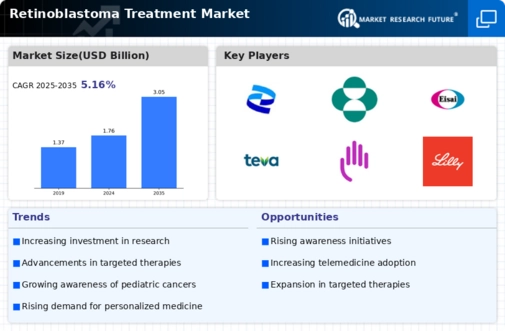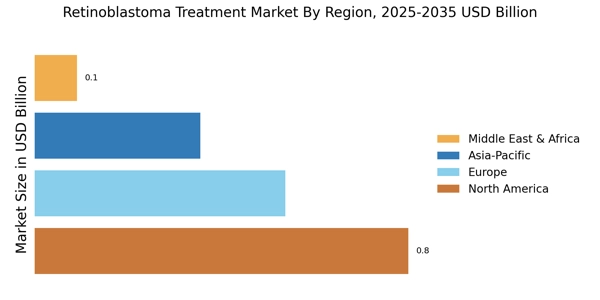Rising Incidence of Retinoblastoma
The Retinoblastoma Treatment Market is influenced by the rising incidence of retinoblastoma, which is the most common malignant eye tumor in children. Recent data suggests that the incidence rate is approximately 1 in 15,000 live births, indicating a need for effective treatment solutions. As awareness increases regarding the symptoms and early signs of retinoblastoma, more cases are being diagnosed, which in turn drives the demand for treatment options. This trend is likely to continue, as healthcare providers emphasize the importance of early detection and intervention, thereby propelling growth in the Retinoblastoma Treatment Market.
Advancements in Treatment Modalities
The Retinoblastoma Treatment Market is witnessing a surge in advancements in treatment modalities, which appears to enhance patient outcomes significantly. Innovative therapies, including targeted therapies and immunotherapies, are being developed to improve efficacy and reduce side effects. For instance, the introduction of intra-arterial chemotherapy has shown promising results in preserving vision while effectively treating the tumor. The market is projected to grow as these novel treatment options become more widely available, potentially increasing the overall survival rates for patients. Furthermore, the integration of precision medicine into treatment protocols may lead to more personalized approaches, thereby driving demand within the Retinoblastoma Treatment Market.
Increased Investment in Pediatric Oncology
The Retinoblastoma Treatment Market is benefiting from increased investment in pediatric oncology research and development. Governments and private organizations are allocating substantial funds to enhance treatment options for childhood cancers, including retinoblastoma. This financial support is fostering innovation and accelerating the development of new therapies. For instance, initiatives aimed at improving access to clinical trials and novel treatment modalities are gaining traction. As a result, the market is expected to expand, with more effective and diverse treatment options becoming available for patients. This investment trend is crucial for the future of the Retinoblastoma Treatment Market.
Growing Awareness and Education Initiatives
The Retinoblastoma Treatment Market is experiencing growth due to increasing awareness and education initiatives aimed at both healthcare professionals and the general public. Campaigns focused on the early signs and symptoms of retinoblastoma are crucial in promoting timely diagnosis and treatment. Educational programs are being implemented in various healthcare settings, which may lead to earlier detection and improved patient outcomes. As awareness continues to rise, the demand for effective treatment options is likely to increase, thereby driving the Retinoblastoma Treatment Market forward. This trend highlights the importance of proactive measures in combating this childhood cancer.
Technological Innovations in Diagnostic Tools
The Retinoblastoma Treatment Market is being propelled by technological innovations in diagnostic tools that enhance the accuracy and speed of retinoblastoma detection. Advanced imaging techniques, such as optical coherence tomography and enhanced ultrasound, are becoming integral in diagnosing retinoblastoma at earlier stages. These innovations not only facilitate timely treatment but also improve the overall prognosis for affected children. As diagnostic capabilities continue to evolve, the market is expected to grow, with more patients receiving appropriate care sooner. This trend underscores the critical role of technology in shaping the future of the Retinoblastoma Treatment Market.


















Leave a Comment